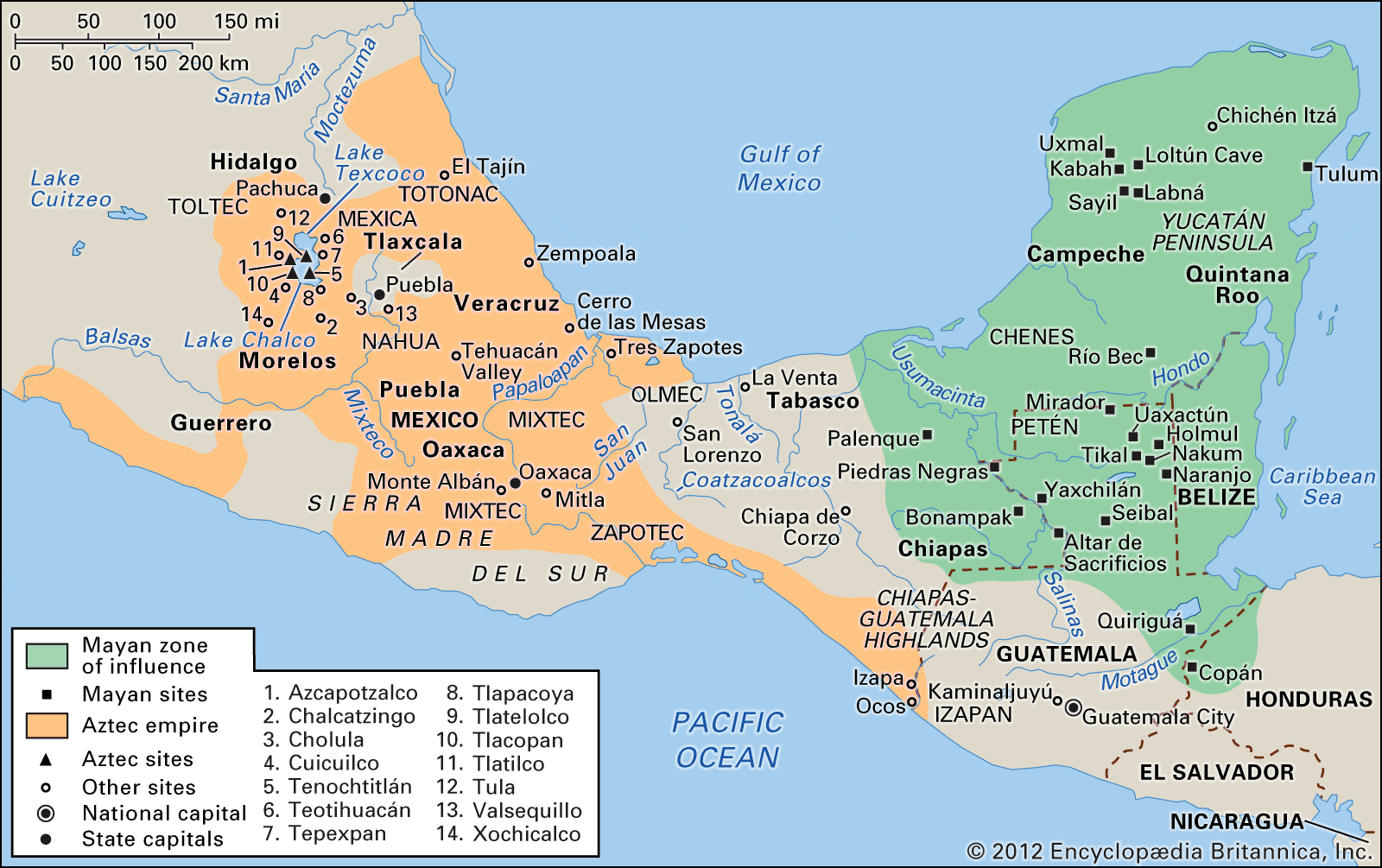The Maya civilization and the Aztec civilization were two highly developed societies in pre-Columbian Mesoamerica, both with complex systems of government, religion, and trade. The Maya existed from around 2000 BCE to 1697 CE in present-day Mexico, Guatemala, Belize, Honduras, and El Salvador, while the Aztecs existed in central Mexico from approximately 1325 CE to 1521 CE. Both societies were highly stratified, polytheistic, and known for their architectural and artistic achievements. The Maya had a widespread trade network, while the Aztecs had a centralized market system. Despite some differences, both civilizations had a significant impact on the history of Mesoamerica.
The Maya Civilization vs. The Aztec Civilization: A Look at Pre-Columbian Mesoamerica
Introduction
The Maya civilization and the Aztec civilization were two of the most advanced and highly developed societies in pre-Columbian Mesoamerica. Both civilizations had complex systems of government, religion, and trade that helped them flourish for centuries. In this article, we will compare and contrast some of the key aspects of these two civilizations.
Geography and Chronology
The Maya civilization existed in what are now Mexico, Guatemala, Belize, Honduras, and El Salvador from approximately 2000 BCE to 1697 CE. The Aztec civilization, on the other hand, existed in what is now central Mexico from approximately 1325 CE to 1521 CE. While the two civilizations existed at different times and in different regions, they both shared a similar environment of tropical rainforests and river valleys.
Social Structure
The Maya civilization was a highly stratified society, with a ruling class of kings, priests, and nobles who controlled the majority of the resources. The common people were farmers, merchants, and artisans who had to pay tribute to the ruling class. The Aztec civilization was also a highly stratified society, with a powerful ruling class of emperors, priests, and nobles who controlled the majority of the resources. The common people were farmers and artisans who had to pay tribute to the ruling class.
Religion
The Maya religion was polytheistic, with many gods and goddesses who presided over different aspects of life, such as agriculture, war, and death. The Maya also believed in afterlife and used elaborate burial rituals to honor their dead. The Aztec religion was also polytheistic, with many gods and goddesses who presided over different aspects of life. The Aztecs believed in making human sacrifices to appease their gods, and the practice was an integral part of their religion.
Art and Architecture
The Maya civilization is best known for its impressive architecture, such as the towering pyramids of Tikal and the beautifully carved buildings of Palenque. The Maya also excelled in the arts, producing intricate pottery, jewelry, and textiles. The Aztec civilization, meanwhile, is known for its impressive stone sculptures and elaborate city layouts. The Aztecs also excelled in the arts, producing intricate pottery and textiles, as well as impressive featherwork.
Economy and Trade
The Maya civilization was a diverse society with a complex trade network that linked different regions together. The Maya traded in a variety of goods, including jade, obsidian, cacao, and feathers. The Aztec civilization was a highly organized society with a centralized market system that allowed them to trade in a wide range of goods, including food, textiles, pottery, and gold.
Conclusion
In conclusion, the Maya civilization and the Aztec civilization shared many similarities in terms of their geography, social structure, religion, art, and economy. However, there were also notable differences between these two civilizations, such as their chronology, trade networks, and religious practices. Despite these differences, both civilizations left an indelible mark on the history of Mesoamerica and continue to captivate the imagination of people today.
